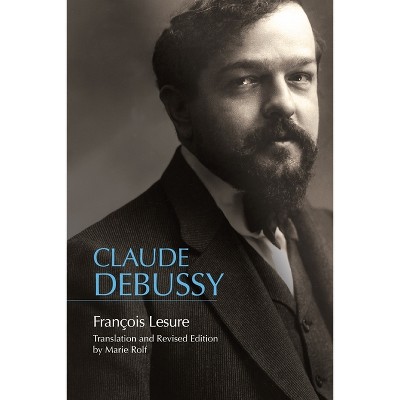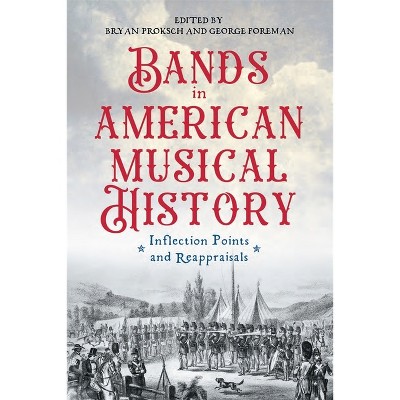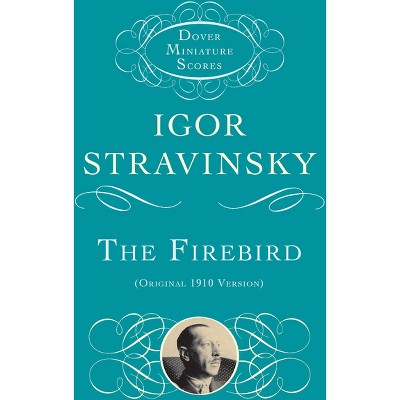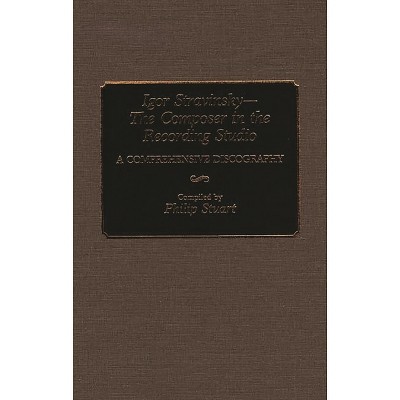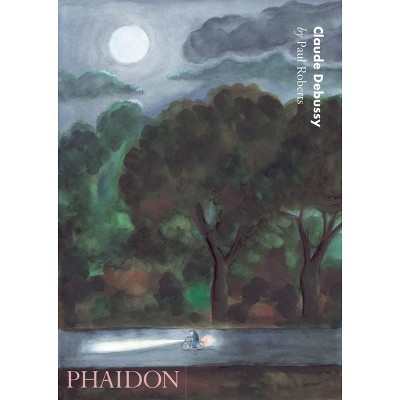The Musical Relationship Between Claude Debussy and Igor Stravinsky - by Mark McFarland (Hardcover)

$109.11 sale price when purchased online
$120.00 list price
Target Online store #3991
About this item
Highlights
- Stravinsky's influence on Debussy in 1910-13, rarely discussed, is demonstrated here in the many modernistic features of such works as the Preludes Book II, Khamma, and Jeux.
- Author(s): Mark McFarland
- 210 Pages
- Music, History & Criticism
Description
About the Book
"Stravinsky's influence on Debussy in 1910-13, rarely discussed, is demonstrated here in the many modernistic features of such works as the Preludes Book II, Khamma, and Jeux. This book reassesses the relationship between Debussy and Stravinsky, two of the most important composers of the early twentieth century. When the Russian composer traveled to France in 1910 to attend the premiere of his first ballet, The Firebird, he was invited to dine at the French composer's house, and a photo of the two commemorates the beginning of their friendship. Stravinsky was already acquainted with many of Debussy's earlier works, and Debussy was introduced to the Russian composer's first three ballets between 1910 and 1913. Stravinsky's early works contain Debussy-like passages, as in the opening measures of his opera The Nightingale, which echoes the opening measures of Debussy's "Nuages." As author Mark McFarland here shows, however, the adoption on Debussy's part of characteristics from Stravinsky's style is, perhaps surprisingly, no less substantial. Debussy borrowed motifs from both The Firebird and Petrushka as well as the Russian tradition of Leitharmony in his little-known ballet Khamma, and Stravinsky's ballets, including The Rite of Spring, seems to have sparked an exploration into octatonic harmony in Debussy's second book of piano preludes. McFarland's close analysis of parallel passages and usages in works of the two composers also reveals that Debussy eventually distanced himself from Stravinsky, perhaps fearing to seem like an acolyte rather than an innovator. His borrowings from Stravinsky (and Russian style) gradually disappear, as McFarland demonstrates by close attention to passages in some of the late works, which move in the direction of a neoclassicism that Stravinsky himself would soon adopt and expand further"--Book Synopsis
Stravinsky's influence on Debussy in 1910-13, rarely discussed, is demonstrated here in the many modernistic features of such works as the Preludes Book II, Khamma, and Jeux. This book reassesses the relationship between Debussy and Stravinsky, two of the most important composers of the early twentieth century. When the Russian composer traveled to France in 1910 to attend the premiere of his first ballet, The Firebird, he was invited to dine at the French composer's house, and a photo of the two commemorates the beginning of their friendship. Stravinsky was already acquainted with many of Debussy's earlier works, and Debussy was introduced to the Russian composer's first three ballets between 1910 and 1913. Stravinsky's early works contain Debussy-like passages, as in the opening measures of his opera The Nightingale, which echoes the opening measures of Debussy's "Nuages." As author Mark McFarland here shows, however, the adoption on Debussy's part of characteristics from Stravinsky's style is, perhaps surprisingly, no less substantial. Debussy borrowed motifs from both The Firebird and Petrushka as well as the Russian tradition of Leitharmony in his little-known ballet Khamma, and Stravinsky's ballets, including The Rite of Spring, seems to have sparked an exploration into octatonic harmony in Debussy's second book of piano preludes. McFarland's close analysis of parallel passages and usages in works of the two composers also reveals that Debussy eventually distanced himself from Stravinsky, perhaps fearing to seem like an acolyte rather than an innovator. His borrowings from Stravinsky (and Russian style) gradually disappear, as McFarland demonstrates by close attention to passages in some of the late works, which move in the direction of a neoclassicism that Stravinsky himself would soon adopt and expand further.Review Quotes
McFarland's analyses are invaluable for anyone studying Debussy's music, often providing important counterarguments to previously published analyses, so I recommend this book for any university library serving advanced music theory students. Debussy's and Stravinsky's compositions continue to both inspire and confound today, over one hundred years later, and analyses like these are vital to unlocking our understanding of them. I look forward to seeing McFarland's future publications.-- "NOTES: THE QUARTERLY JOURNAL OF THE MUSIC LIBRARY ASSOCIATION"
Dimensions (Overall): 9.0 Inches (H) x 6.0 Inches (W) x .5 Inches (D)
Weight: .99 Pounds
Suggested Age: 22 Years and Up
Number of Pages: 210
Genre: Music
Sub-Genre: History & Criticism
Publisher: University of Rochester Press
Format: Hardcover
Author: Mark McFarland
Language: English
Street Date: May 14, 2024
TCIN: 93389250
UPC: 9781648250903
Item Number (DPCI): 247-48-5542
Origin: Made in the USA or Imported
If the item details aren’t accurate or complete, we want to know about it.
Shipping details
Estimated ship dimensions: 0.5 inches length x 6 inches width x 9 inches height
Estimated ship weight: 0.99 pounds
We regret that this item cannot be shipped to PO Boxes.
This item cannot be shipped to the following locations: American Samoa (see also separate entry under AS), Guam (see also separate entry under GU), Northern Mariana Islands, Puerto Rico (see also separate entry under PR), United States Minor Outlying Islands, Virgin Islands, U.S., APO/FPO
Return details
This item can be returned to any Target store or Target.com.
This item must be returned within 90 days of the date it was purchased in store, shipped, delivered by a Shipt shopper, or made ready for pickup.
See the return policy for complete information.
Trending Poetry

Bestseller
$24.48
MSRP $35.00
Buy 2, get 1 free select books, movies, music & Funko
4.7 out of 5 stars with 26 ratings

Bestseller
$14.39
Buy 2, get 1 free select books, movies, music & Funko
3.8 out of 5 stars with 62 ratings

$22.80
was $26.60 New lower price
Buy 2, get 1 free select books, movies, music & Funko
5 out of 5 stars with 4 ratings
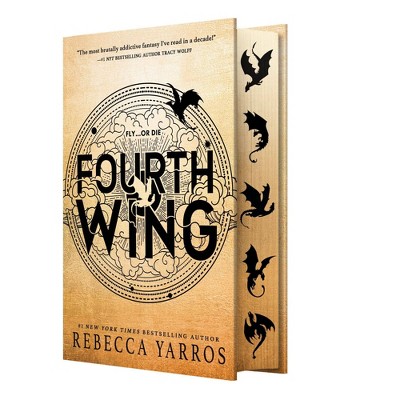
$23.09
Buy 2, get 1 free select books, movies, music & Funko
4.4 out of 5 stars with 11 ratings

$23.09
Buy 2, get 1 free select books, movies, music & Funko
3.8 out of 5 stars with 13 ratings

Highly rated
$9.85 - $23.09
MSRP $15.99 - $32.99
Buy 2, get 1 free select books, movies, music & Funko
4.8 out of 5 stars with 137 ratings
